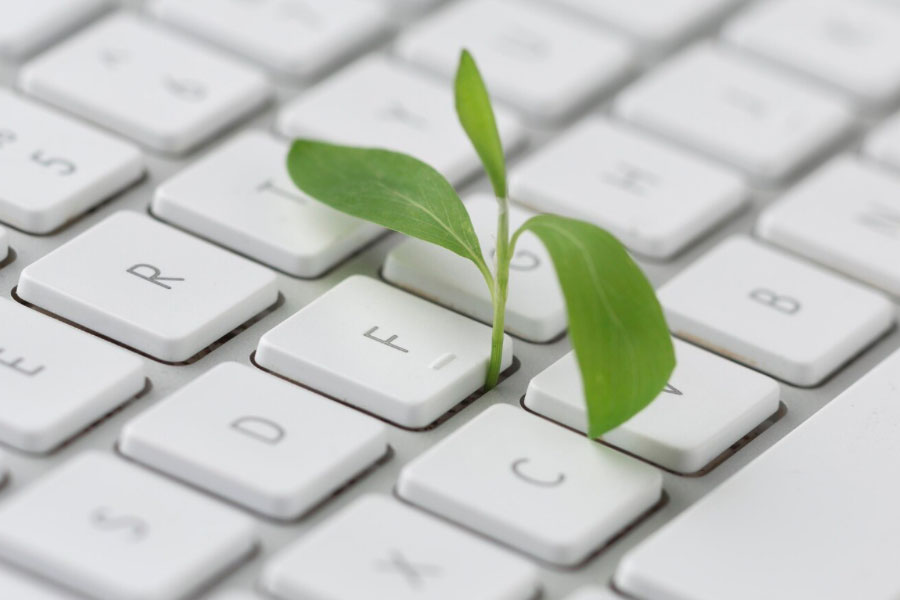Web Design for Sustainability: Reducing Carbon Footprint and Energy Consumption
Creating a sustainable website isn’t just good for the planet; it can also enhance user experience and save costs. As our digital footprint grows, it’s crucial to consider the environmental impact of our online activities. Let’s explore how web design can reduce carbon footprints and energy consumption.
Understanding the Environmental Impact
The Digital Carbon Footprint
Every time we use the internet, we consume energy. Websites, especially those with heavy graphics and videos, require a lot of power to run servers and keep the content available 24/7. This power usually comes from energy sources that emit carbon dioxide (CO2), contributing to global warming.
Energy Consumption in Web Hosting
Web hosting requires large data centers that use significant amounts of electricity to power servers and keep them cool. The more complex and heavy a website is, the more energy it consumes, leading to a higher carbon footprint.
Principles of Sustainable Web Design
Optimize Images and Videos
Images and videos are often the largest files on a website, requiring more energy to load. Compressing these files without sacrificing quality can significantly reduce the energy needed. Tools like TinyPNG for images and HandBrake for videos can help optimize your media.
Use Efficient Coding
Efficient coding means writing clean, minimal code that reduces the load on servers. Using lightweight frameworks and avoiding unnecessary scripts can make your site faster and more energy-efficient. Minimizing HTTP requests and using lazy loading for images can also help.
Implement Green Hosting
Choosing a web host that uses renewable energy can drastically cut your website’s carbon footprint. Companies like GreenGeeks and A2 Hosting offer eco-friendly hosting solutions that rely on renewable energy sources.
Design Choices for Lower Energy Consumption
Simplify Design
Simple, minimalist designs not only look modern but also require fewer resources to load. Avoiding overly complex animations and heavy graphics can make your website more sustainable. Focus on user experience with clean lines and easy navigation.
Optimize for Mobile
With more people accessing websites via mobile devices, optimizing for mobile can save energy. Mobile-optimized sites load faster and use less data, reducing energy consumption. Use responsive design to ensure your site looks good and works well on any device.
Enable Browser Caching
Browser caching stores parts of your website on a user’s device, so they don’t have to download the same data every time they visit. This reduces the load on servers and speeds up the browsing experience, saving energy.
Monitoring and Improving Performance
Regular Audits
Conducting regular audits of your website can help identify areas where you can reduce energy consumption. Tools like Google PageSpeed Insights and GTmetrix provide detailed reports and suggest improvements for faster, more efficient websites.
Monitor Your Impact
Use tools like Website Carbon Calculator to measure your website’s carbon footprint. This can give you a clear idea of how sustainable your site is and where you can make improvements.
The Benefits of Sustainable Web Design
Cost Savings
Reducing energy consumption not only benefits the environment but can also lower your hosting and operational costs. Efficient websites require less bandwidth and server space, which can translate into savings.
Enhanced User Experience
Sustainable web design often leads to faster load times and a better user experience. Visitors are more likely to stay on your site and engage with your content if it loads quickly and runs smoothly.
Positive Brand Image
Being eco-friendly can improve your brand image. As more consumers become environmentally conscious, they prefer businesses that take sustainability seriously. Promoting your green web design efforts can attract like-minded customers.
Conclusion
Sustainable web design is about making thoughtful choices that reduce energy consumption and carbon emissions. By optimizing images and videos, using efficient coding, choosing green hosting, simplifying design, and conducting regular audits, you can create a website that’s better for the planet and your users. Embracing these practices not only helps the environment but also enhances user experience and can save costs, making it a win-win for everyone.

